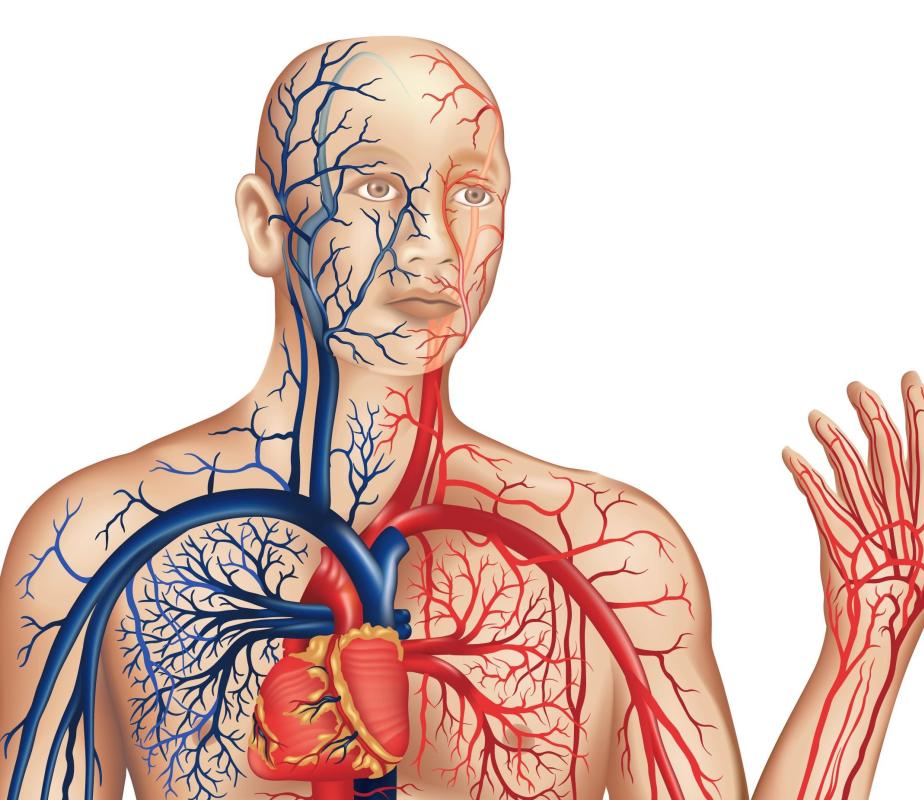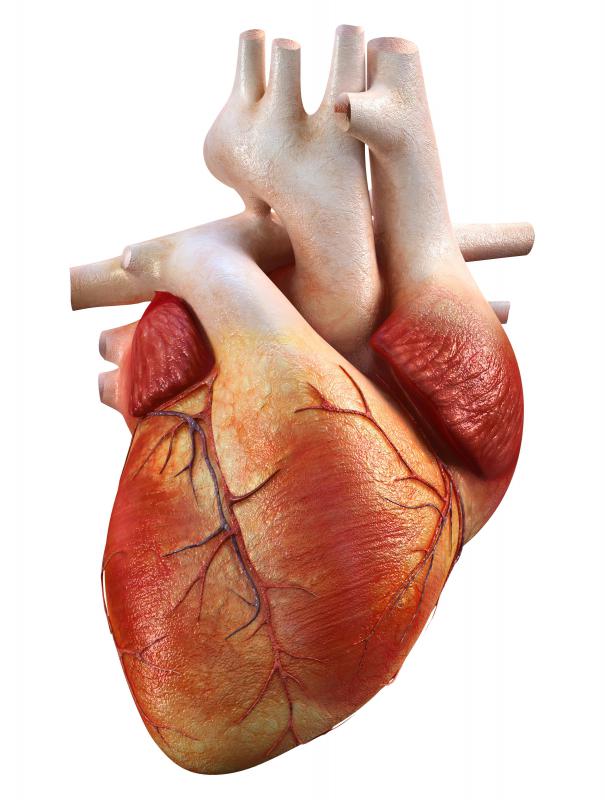At TheHealthBoard, we're committed to delivering accurate, trustworthy information. Our expert-authored content is rigorously fact-checked and sourced from credible authorities. Discover how we uphold the highest standards in providing you with reliable knowledge.
What is the Cardiovascular System?
The cardiovascular system, also known as the circulatory system, is a system of the body comprised of the heart, the blood, and the blood vessels. This system is responsible for transporting blood. As the cardiovascular system moves blood throughout the body, cells receive oxygen and nutrients. Carbon dioxide and other wastes are removed from the body as well. The word cardiovascular stems from the Greek word kardia which means "heart" and the Latin word vasculum which means "small vessel."
In this complex system, the heart acts as a pump, forcing the blood to move through the body and relaxing so that more blood can enter its chambers. The majority of the blood is comprised of plasma, a watery fluid filled with protein. Less than half of the blood is made up of platelets and red and white blood cells. The platelets help blood to clot if a person suffers a cut or hemorrhages.

It's important to maintain a healthy cardiovascular system since the blood and blood vessels are crucial to good health. The cardiovascular system is the workhorse of the body, continuously moving to push blood to the cells. If this important system ceases its work, the body dies.
The heart contracts more than 100,000 times daily as it pushes blood through the blood vessels. As it contracts, it forces blood into the bloodstream. The blood transports nutrients from the digestive system and oxygen from the lungs to the body's cells. Then the blood carries waste products that are removed by the kidneys and carbon dioxide that is expelled by the lungs.

The heart is a muscle about the size of a fist and is divided into four chambers. These chambers are the right atrium, the left atrium, the right ventricle, and the left ventricle. During the circulatory process, blood enters the heart's right atrium. As the heart contracts, blood moves through a valve from the right atrium into the right ventricle. The blood then flows through another heart valve into the lungs.

This is where the blood picks up oxygen. At this point, the blood flows to the heart's left atrium and through a valve into the left ventricle, from where it then flows through a valve into the aorta. Upon leaving the aorta, the blood travels to the remainder of the body, carrying much needed nutrients and oxygen to the body's cells.
When problems arise within the cardiovascular system, a person suffers from a cardiovascular disease. More than 60 kinds of cardiovascular diseases can cause serious health problems. Common diseases include stroke or heart disease. Some conditions such as congenital heart disease are present when a person is born; other cardiovascular diseases develop gradually as a person grows into adulthood.
AS FEATURED ON:
AS FEATURED ON:
















Discussion Comments
Steven, a 65 year old retiree, is walking home after a night visiting friends and takes a short-cut through the cemetery. Suddenly he feels someone tapping him on the shoulder and becomes very frightened and anxious and so he runs home.
Explain the physiological responses this fright has on his cardiovascular and pulmonary systems.
Try to take two fish omega3 capsules a day and a vitamin Quercetin 500 once a day, also with coenzyme Q10. It helps.
I was born with Pulmonary Stenosis, a severe blockage in the pulmonary valve, and had open heart surgery just before my fourth birthday in 1966.
There wasn't even a surgeon in Australia who could perform open heart surgery back then and Sir Darcy Sutherland was flown in from England to perform this new and delicate operation. It was groundbreaking surgery back then, but it has seen me get to 48 years of age without any problems.
I will more than likely have to have further surgery in the near future as technology has provided me the opportunity to have my heart functioning at almost 100 percent capacity today. Truly amazing!
ArizonaSun- My husband has the exact same thing and it wasn’t diagnosed until he was in his twenties. So I’m not sure if the stethoscope had to be in some exact position for the doctor to hear or if maybe it’s something that just happens. Our doctor explained to us it may be genetic so we need to mention it at their check-ups.
My three year old son was just diagnosed with a heart murmur. I couldn’t see how it wasn’t caught before. How could these doctors have missed such an important thing all this time? We were referred to a laboratory to have an ultrasound performed on his little heart.
After two aggravating months we found his murmur is caused by an exit valve not completely shutting. He may outgrow it and even if he doesn’t the doctors say we shouldn’t worry about restricting anything and he can live normally.
Prayers2Heal- That is so true about the correlation between the two. My dentist explained it to me and I actually thought it was a ploy to get me to accept the deep cleaning he suggested. I hadn’t been to the dentist in years so I was skeptical. So I called my family doctor who confirmed everything my new dentist had said and suggested I follow his orders and get my teeth and gums healthy.
What most people do not know is that the condition of your oral health is similar to the condition of your arteries. If your teeth are covered in plaque and calculus you can safely assume your arteries have some type of blockage. In recent years doctors are urging their patients to increase their oral health because of its direct relationship to heart disease.
Working in the dental field I can view patients x-rays and chart notes and I can tell before even reading their medical history if they have heart disease. And sometimes I’ve even seen the dentist suggest a patient see their doctor right away if they showed heavy plaque and high blood pressure.
Post your comments